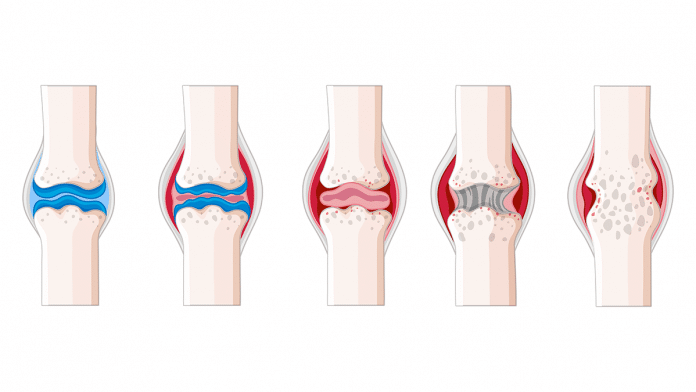Before we jump onto the different types of arthritis, let’s dive in to find out what is arthritis itself? Arthritis is defined as a condition where a person suffers from inflamed joints leading to debilitating joint pain.
There are many different forms of arthritis, but we will have a look at the most common ones.
Osteoarthritis or degenerative arthritis is a condition which is very common and affects most of the individual’s at least once in a lifetime. The over usage of the joints results in wear and tear.
This arthritis results due to increased age but also occurs due to over-weight or joint injuries that put extra strain over the bones.
It most commonly affects hips, knee or spine, leading to fatigue and painful joints. The shock absorber, i.e. cartilage covering the joints starts wearing off leading to inflammation of joints.
Consider watching this video to know what is Arthritis.
The damage of the cartilage results in painful bumps or spurs over the bones leading to osteoarthritis.
The symptoms experienced in osteoarthritis include aching pain, trouble performing daily activities, pain during walking, stiffness of the joints after rest or morning stiffness lasting for around half an hour. The joints feel warm on touch; they become swollen with reduced range of motion.
Rheumatoid arthritis is another type of arthritis which is an autoimmune disorder where the immune system attacks different parts of the body, especially joints.
It results in damaging effect over the joints, ultimately resulting in inflammation and severe damage to the joint.
1 out of 5 people has rheumatoid arthritis, where they experience rheumatoid nodules. These nodules form over joints which are under pressure like elbows, heels and knuckles.
It is assumed that this arthritis results due to the bacterial or viral infection, which starts attacking the targeted joints. The two chemicals linked with rheumatoid arthritis include interleukin-1 and TNF or tumour necrosis factor, which results in inflammation and damage to the bones.
The symptoms experienced in rheumatoid arthritis include stiff, swollen and painful joints, symmetrical pattern of inflamed joints, two or more joints are involved along with morning stiffness.
Psoriatic arthritis is a type of arthritis where the patients also suffer from inflammation of the skin. The skin turns red, patchy with raised inflamed areas along with the scales.
The areas affected in psoriatic arthritis include knees, elbows, scalp, skin surrounding anus or genital areas and navel.
This arthritis is usually seen in people aged 30 to 50 years, but it is also experienced during childhood. The disease is more common in men than women, and skin disease is frequently seen before the inflammation of the joints.
The symptoms experienced in psoriatic arthritis include swelling of the toes and fingers, pitting or discolouration of the fingernails with one or two inflamed joints.
Gout is the type of condition where there is an excess accumulation of uric acid within the body either due to excess production, improper processing by the kidneys or excess consumption of uric acid in the form of diet.
It most commonly involves big toe or some part of the foot.
The symptoms experienced in gout include sharp and sudden pain that triggers after an alcohol shot, illness, stressful situation or certain drugs. It lasts typically for 3-10 days but can prolong for months if not treated initially. Other symptoms include the inability to move the joints, redness, inflammation, discomfort and intense joint pain.
Lupus or Systemic lupus erythematosus is a type of autoimmune disorder which attacks various organs and joints of the body.
The cause of this disease is unknown, but it causes pain and inflammation throughout the body.
Middle-aged women are more likely to experience this disease. The symptoms experienced in Lupus include headaches, fatigue, swollen joints, butterfly rash, mouth sores, sensitivity to sun and others.
Lastly, after learning about different types of arthritis, it makes it easier for the patients as well as the doctors to strategically treat the condition with specific pharmacological and non-pharmacological interventions.
Until Next Time,
Team Doctor ASKY!





















